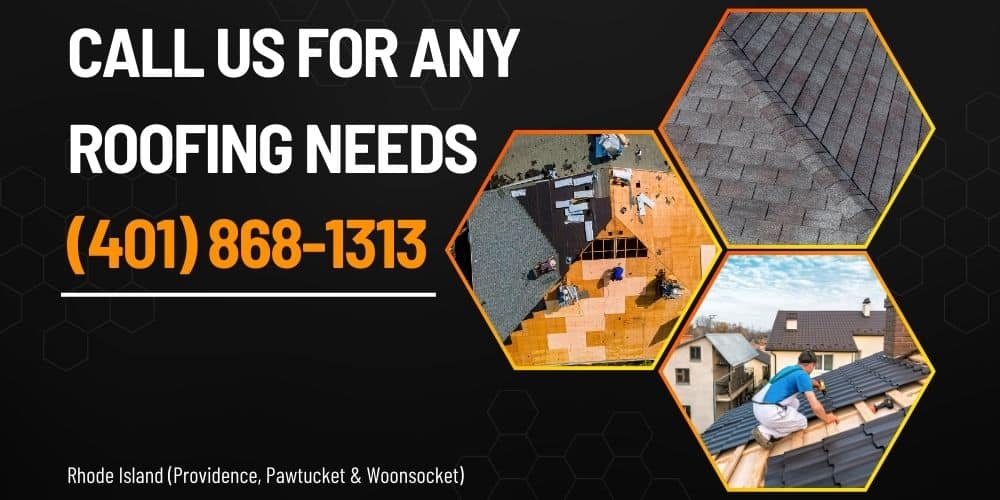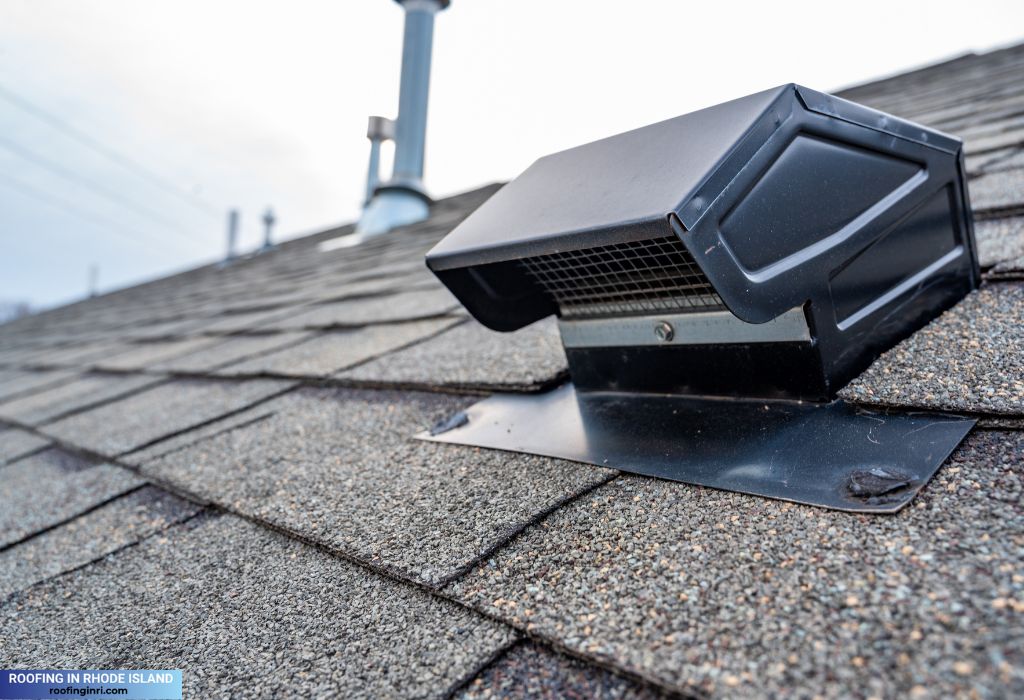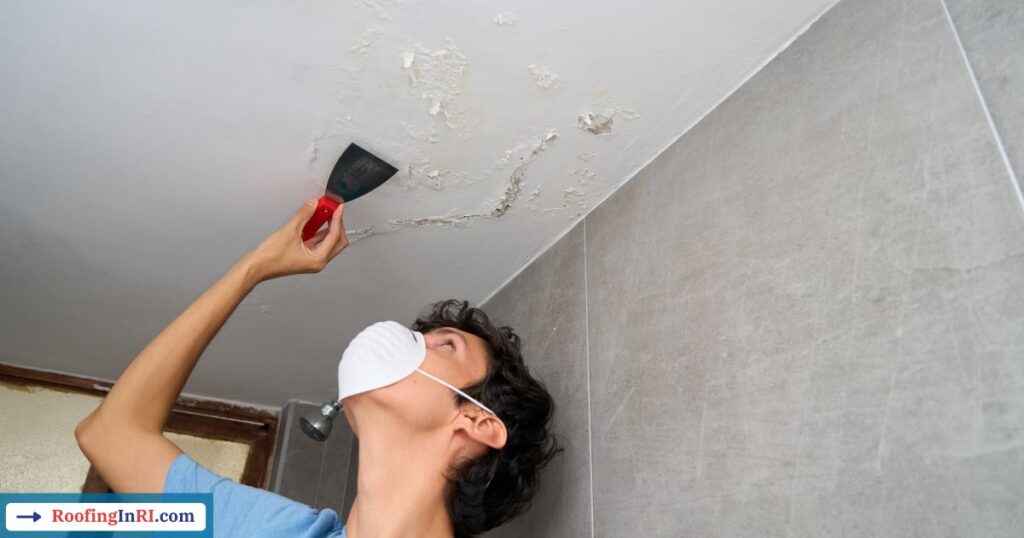Celling condensation often leads to unsightly water stains, peeling paint, and mold growth. If you’ve noticed moisture in the ceiling, water droplets, or wet ceilings, you need to find and fix the root causes as soon as possible to maintain a healthy lifestyle and damage-free home.
There is no exact reason for condensation on the ceiling for everyone. Your reason could be different from mine. However, I will help you figure this out, troubleshoot several possible reasons, and fix the issue that is causing moisture to hang up on the ceiling. You will also know how to prevent it from happening again.
What is Ceiling Condensation?

Ceiling condensation is primarily caused by excess moisture in the air. This excess moisture can from various sources such as poor ventialtion, cooking, bathing, leaks on ceiling & pipe, high humidity, and insulation problem.
When the air becomes cooler, its moisture-holding capacity decreases and causes water vapor to condense into liquid droplets. Does it confusing? Let me clearify in an example- Imagine air as a sponge. When the sponge is warm, it can hold a lot of water. But as it cools down, it can’t hold as much water anymore. The extra water then squeezes out of the sponge.
Similarly, when warm air cools down, it can’t hold as much water vapor. So, the water vapor turns back into liquid water droplets, like dew on a cold morning or fog in the air.
This issue is common during colder months when indoor heating meets poorly insulated ceilings. However, it can occur year-round under certain conditions.
I will discuss the causes more and how to fix them later in this post.

Ceiling Condensation: A Roof Problem or Something Else?
While ceiling condensation might seem like a roofing issue, it’s not always directly tied to the roof.
Sometimes, it stems from other sources, such as high indoor humidity, insufficient ventilation, or leaks in plumbing or HVAC systems. And roofing problems like poor insulation or gutter issues can worsen the problem.
Identifying the exact cause is the first step toward an effective solution to prevent condensation or moisture from building up on the ceiling.
Common Causes of Ceiling Condensation & How to Fix Them

Poor Insulation
Inadequate insulation allows heat to escape, creating cold spots on the ceiling where moisture can condense. This poor insulation is the main cause of ceiling condensation for most people.
Upgrade your insulation, especially in the attic. Consider using spray foam or fiberglass insulation to create a thermal barrier.
High Humidity
Excessive indoor humidity levels increase the likelihood of condensation forming on ceilings.
Use a dehumidifier to regulate indoor humidity. Aim for levels between 30% and 50%.
Lack of Ventilation
It’s another common reason for many people. Poor airflow traps moist air inside, leading to condensation problems.
Ensure adequate attic ventilation by installing exhaust fans in bathrooms and kitchens.

Read: Understanding Roof Ventilation.
Leaks
Leaks from your roof, plumbing, or HVAC systems can contribute to wet ceilings.
Repair any leaks at the earliest time possible. Regular inspections help to become proactive.
Read also: Will home insurance cover a leaking roof?
Steam-Producing Activities
Cooking, showering, and even drying clothes release significant amounts of moisture. These activities also contribute to the enhancement of moisture buildup that comes from other sources like poor insulation or high humidity.
Use exhaust fans while cooking & showering and vent dryers to the outdoors.
Lifestyle Choices
Activities like keeping many houseplants or drying laundry indoors can elevate humidity levels.
Be mindful of activities that introduce excess moisture and take steps to balance them with adequate ventilation.
Temperature Issues
A huge difference in indoor and outdoor temperatures can cause ceilings to cool quickly, leading to condensation.
Maintain consistent indoor temperatures and avoid drastic changes in heating. However, situations are not always in your control, especially weather-related issues. Be mindful of that. Sometimes, you can mitigate the condensation but cannot stop completely.
Poorly Sealed Windows and Doors
Gaps in windows & doors allow cold air to seep in and create temperature differences that encourage condensation.
To get around this situation, seal any gaps or cracks using weather stripping or caulk.
Roof Flashing or Gutter Issues
Improperly installed or clogged gutters and flashing allow water to seep into the roof which causes moisture in the ceiling.
Clean and maintain gutters regularly and ensure flashing is installed correctly to direct water away.
How to Fix/Prevent Ceiling Condensation
- Improve Insulation: Adding insulation to the attic helps maintain consistent temperatures and reduces condensation risks.
- Reduce Humidity: Invest in dehumidifiers and avoid activities that raise indoor humidity. Consider houseplants that absorb moisture, like peace lilies or ferns.
- Establish Proper Ventilation: Ensure your attic, kitchen, and bathroom are well-ventilated. Install ridge and soffit vents in your attic for better airflow.
- Fix Leaks: Inspect and repair any leaks in your roof, plumbing, or HVAC systems as soon as they are detected.
- Seal Windows and Doors: Draft-proof your home by sealing gaps with weather stripping or caulk.
- Monitor Temperature: Maintain a consistent indoor temperature to avoid rapid cooling of ceilings. Use a smart thermostat for better temperature regulation.
- Take Care of Your Water Runoff System: Ensure gutters and downspouts are clear of debris to direct water safely away from your home.
- Invest in Roof Maintenance: Schedule annual roof inspections to identify and address potential problems early, such as damaged flashing or missing shingles.
Roofing experts in Rhode Island understand the challenges posed by the region’s climate and offer tailored solutions to combat condensation effectively.
Whether you need a roof inspection, repair, or upgrade, taking proactive measures will protect your home from the costly effects of condensation.
Contact us today for expert advice tailored to Rhode Island’s unique needs!
Ready to elevate your home’s protection and curb appeal? Call us at (401) 868-1313 today for expert roofing solutions in Rhode Island (Providence, Pawtucket & Woonsocket) – because your roof deserves the best care it can get!




